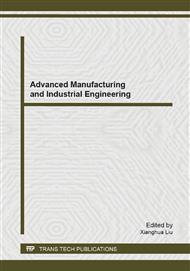p.743
p.747
p.752
p.756
p.760
p.764
p.768
p.773
p.779
Scale Distorted Target Recognition Based on Machine Vision
Abstract:
Machine vision means to carry out measurement or judgment with machine instead of human eyes. In the field of target recognition, optical correlation technology is a main way to realize machine vision. Targets can be recognized and located with high precision taking advantage of optoelectronic hybrid joint transform correlator (OHJTC). However, when scale or angular distortion of the detected target exists relative to the reference template, the intensity of correlation peaks will decrease to a great extent, which restricted the recognition results greatly. In this paper, the development and principle of maximum average correlation height (MACH) algorithm is introduced. Through amounts of experiments, the controlling parameters of the synthesized filter are optimized, which makes MACH filter suppress background noise and widen recognition range of targets. To show the feasibility of this algorithm, simulative and optical experiments of the improved MACH filter are carried out. As an example, the recognition results of a fighter target in sky are given, which shows the scale distortion tolerance can reach up to ±23%. The actual effect of the improved MACH filter algorithm has been confirmed very well.
Info:
Periodical:
Pages:
760-763
Citation:
Online since:
August 2014
Authors:
Price:
Сopyright:
© 2014 Trans Tech Publications Ltd. All Rights Reserved
Share:
Citation:


